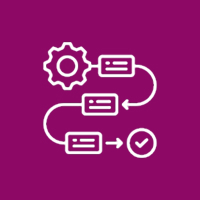In a digital-first setting, the new standard the contemporary software development lifecycle is established around is security. For organizations using Java to build mission-critical applications, protecting sensitive information, ensuring regulatory compliance, and protecting customer trust are some of the most important security priorities. Java security development is itself the practice of developing secure code along with the best utilization of frameworks and modern security tooling to build Java applications in a powerful way yet also safeguard against the constantly changing landscape of cyber security threats.
Why Security in Java matters
Java is the language that powers millions of applications around the globe, online banking portals, financial systems, healthcare applications, to global eCommerce marketplaces. Such widespread use of Java applications creates incentive to hack for criminals, specifically a Java application that was not developed with secure coding in mind is especially subject to exploits. The vulnerabilities to applications that upon can could exist without secure coding practices include:
- SQL Injection Attack – Ineffectively sanitized queries can be exploited.
- Cross-Site Scripting (XSS) – An actor can inject a malicious script into a web application.
- Broken Authentication – The login/session controls are weak to allow another to assume that it’s their account and gain access.
- Insecure Deserialization – Serialized objects can be exploited allowing for arbitrary code/user execution.
- Weak/Inadequate Encryption – Making sure sensitive data is at risk to being compromised in transit or at rest.
Implementing a software development lifecycle that takes a security first approach will allow an enterprise to proactively secure their Java applications from these insecurities.
Fundamental Principles of Java Security Development
1. Secure Coding Practices
- Adhering to OWASP Top 10, as well as Java security standards, to avoid typical vulnerabilities.
- Implementing defensive coding practices that validate all inputs and mitigate injection attacks.
2. Authentication & Authorization
- Employing frameworks such as Spring Security for multi-factor authentication, SSO, and role-based access control.
- Using OAuth 2.0 and JWT tokens for secure identity management.
3. Encryption & Data Protection
- Utilizing the Java Cryptography Architecture (JCA) for strong algorithms (AES, RSA, SHA-256).
- Using secure hashing for passwords (PBKDF2, bcrypt, or Argon2) to protect user credentials.
4. Dependency & Patch Management
- Consistently scanning libraries utilizing tools like OWASP Dependency-Check, Snyk or the Maven Security Plugin.
- Ensuring that frameworks and third-party components are up-to-date as to limit exposure.
5. Developing Secure APIs
- Implementing HTTPS/TLS for all REST APIs, rate limiting via user authentication tokens and monitoring.
- Securing microservices via mutual TLS and API gateways.
6. Automated Security Testing
- Utilizing Open Source Static Application Security Testing (SAST) tools and Dynamic Application Security Testing (DAST) tools in CI/CD.
- Subjecting your application security to penetration testing tools and using DevSecOps pipelines to ensure ongoing consistent security for Java development.
Your Java Development is Business Secure
- Regulations and compliance ensures your organization meets GDPR, HIPAA, PCI DSS and SOC 2.
- Reduced Risk means avoiding breaches, lawsuits and costly downtime.
- Customer confidence improves when you protect your users data and transactions.
- Scalable and future-proof security frameworks, don’t worry if threat levels change the frameworks are capable.
- Operational resilience protects your core systems in the event of cyberattack and organizational disruption.
The Future of Java Security
- The Java ecosystem will continue to integrate next generation security technology as adversary techniques evolve in the future.
- AI threat detection will utilize machine learning models to detect anomalies including unusual traffic patterns in real time.
- Zero trust architectures will provide strong authentication for every user, device, and service to be secure in cloud-native applications.
- “Security at Scale”, During software delivery more security will be embedded for automated compliance in each stage of delivery.
- Significantly increasing JVM protections will limit not only the potential of memory corruption but also other runtime exploits.
- Cryptography of post-quantum security and algorithms will become widely adopted.
Conclusion
Java security development isn’t just about adding defensive measures—it’s about building trustworthy, future-ready applications. By adopting secure coding practices, leveraging frameworks like Spring Security, integrating encryption, and automating testing, businesses can reduce risks, maintain compliance, and stay ahead of cyber threats.
Enterprises that make security a core part of their Java development lifecycle will not only protect their users but also gain a long-term competitive advantage in today’s digital economy.
Contact Us Today













 Database Development
Database Development












































